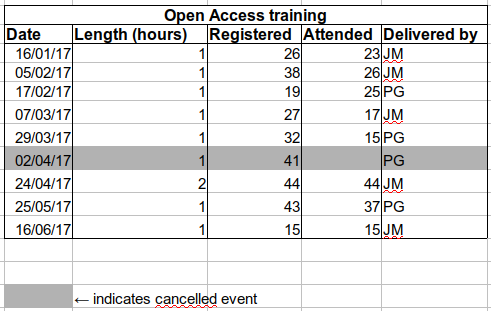


Tabular data format how to#
Let’s now go back to the Image example.Some days ago I been asked by a BI developer about how to set format of SSAS Tabular date column to dd/mm/yyyy in SSDT(Sql Server Data Tools). To read more about these containers see the Dimensioned Containers guide. In practical terms this requires that your data structure contains Elements (of any type) held in these Container types: NdLayout, GridSpace, HoloMap, and NdOverlay, with all dimensions consistent throughout (so that they can all fit into the same set of columns). Deconstructing nested data in this way only works if the data is homogeneous. collapse() to get a Dataset object to which we can apply operations or transformations to other Element types. We can collect the data into a HoloMap to visualize it and then call. Let’s say we want to make multiple observations of a noisy signal. Storage formats #ĭataset types can be constructed using one of three supported formats, (a) a dictionary of columns, (b) an NxD array with N rows and D columns, or (c) pandas dataframes:Įven deeply nested objects can be deconstructed in this way, serializing them to make it easier to get your raw data out of a collection of specialized Element types. All interfaces support a number of standard constructors. Data types and Constructors #Īs discussed above, Dataset provides an extensible interface to store and operate on data in different formats. For a reference of how to use these various Element types, see the Elements Reference. An Element can also have any number of value dimensions ( vdims), which may be mapped onto various attributes of a plot such as the color, size, and orientation of the plotted items. This categorization is based only on the kdims, which define the space in which the data has been sampled or defined. For this particular data, the semantically appropriate choice is Curve, since the y values are samples from the continuous function exp.Īs a guide to which Elements can be converted to each other, those of the same dimensionality here should be interchangeable, because of the underlying similarity of their columnar representation:ġD: Area, Bars, BoxWhisker, Curve, ErrorBars, Scatter, SpreadĢD: Bars, Bivariate, BoxWhisker, HeatMap, Points, VectorField Since all these plots have the same dimensionality, they can easily be converted to each other, but there is normally only one of these representations that is semantically appropriate for the underlying data. Pd.DataFrame(np.array(,, ]), columns=)Ī number of additional standard constructors are supported:Įach of these three plots uses the same data, but represents a different assumption about the semantic meaning of that data – the Scatter plot is appropriate if that data consists of independent samples, the Curve plot is appropriate for samples chosen from an underlying smooth function, and the Bars plot is appropriate for independent categories of data. HoloViews defines an extensible system of interfaces to load, manipulate, and visualize this kind of data, as well as allowing conversion of any of the non-tabular data types into tabular data for analysis or data interchange.īy default HoloViews will use one of these data storage formats for tabular data:Ī pure Python dictionary containing 1D NumPy-arrays for each column.Ī purely NumPy array format for numeric data. Spreadsheets, relational databases, CSV files, and many other typical data sources fit naturally into this format. Tabular data has a fixed list of column headings, with values stored in an arbitrarily long list of rows. In this guide we will explore how to work with tabular data in HoloViews.


 0 kommentar(er)
0 kommentar(er)
